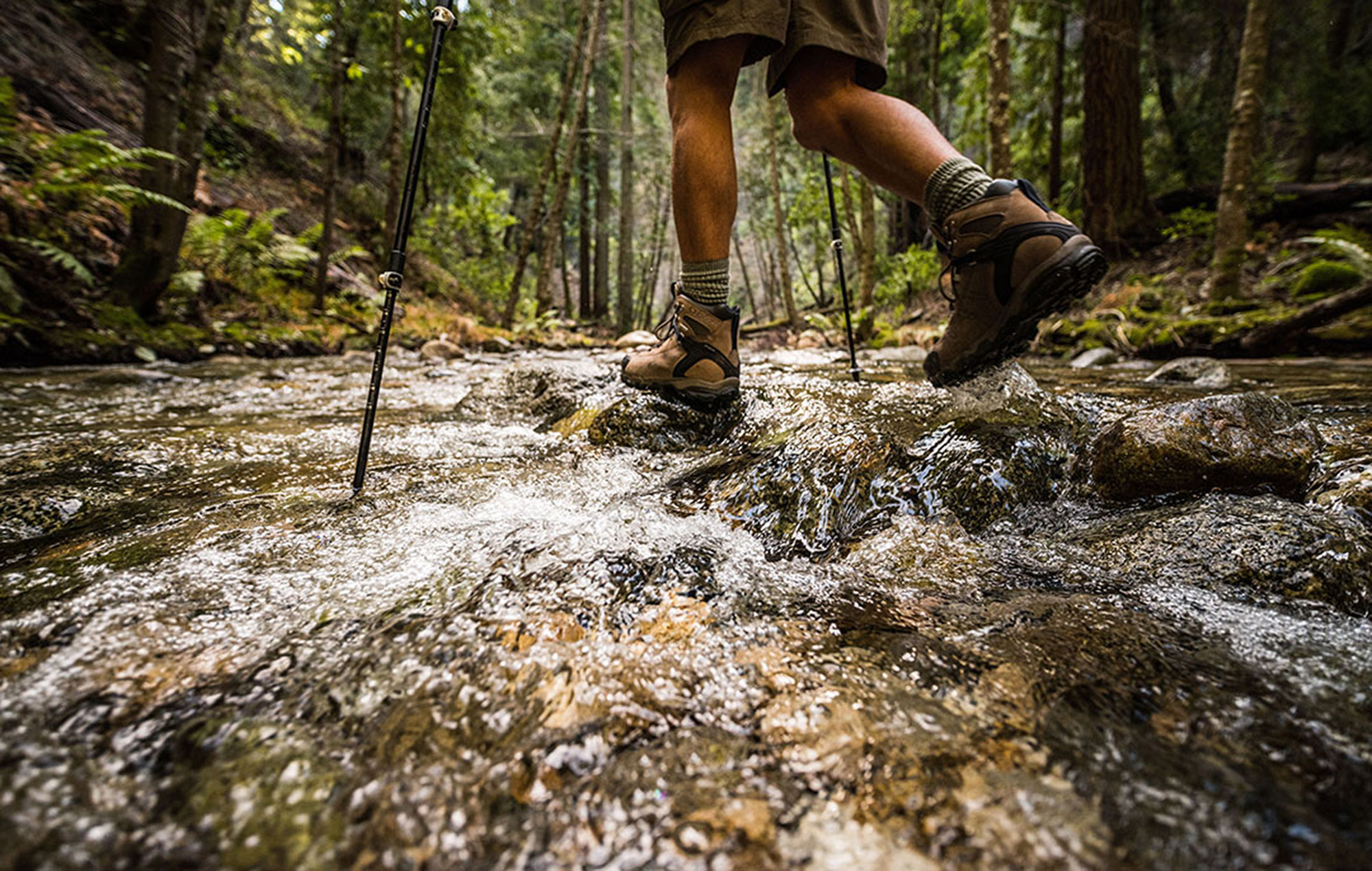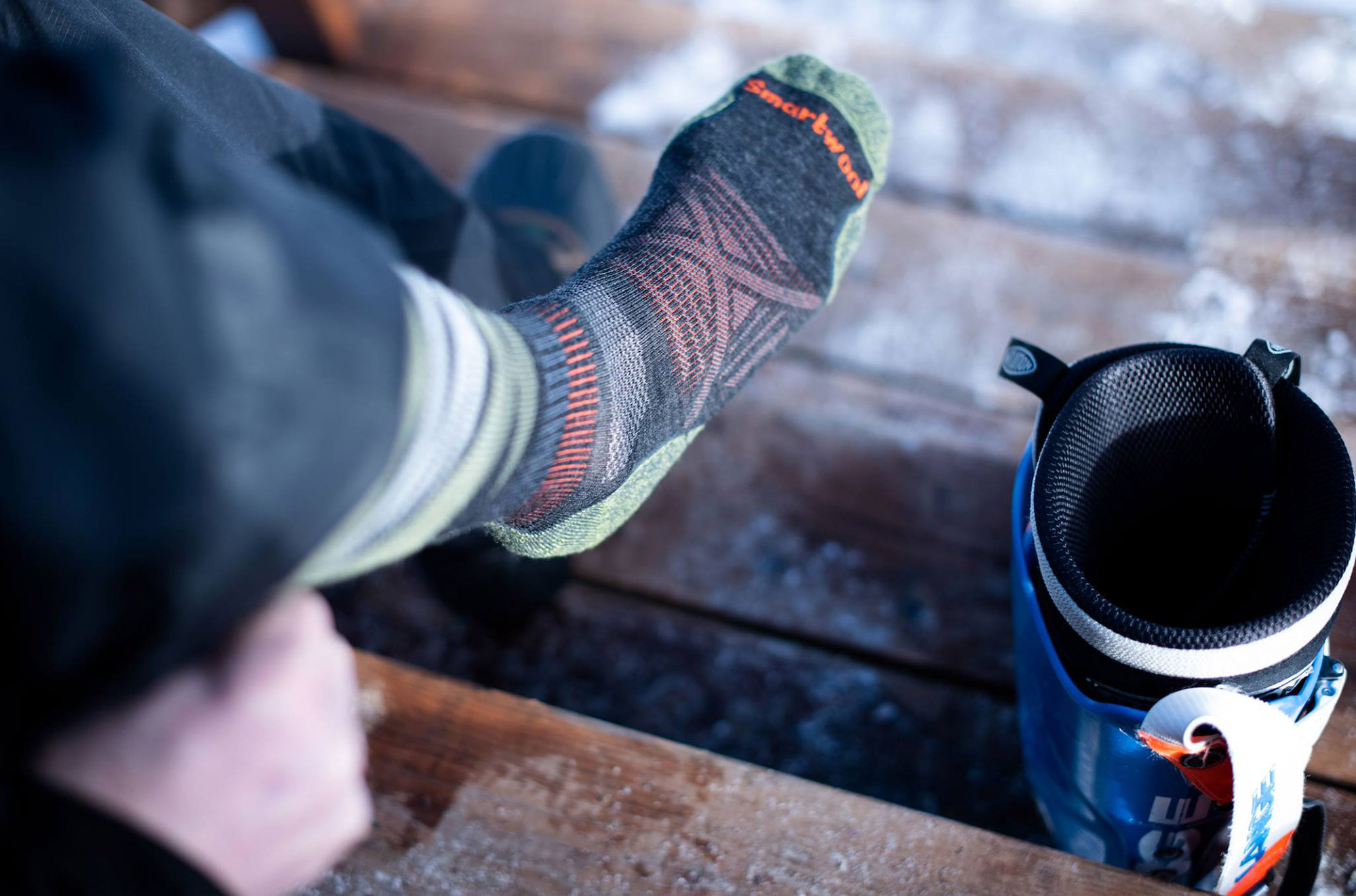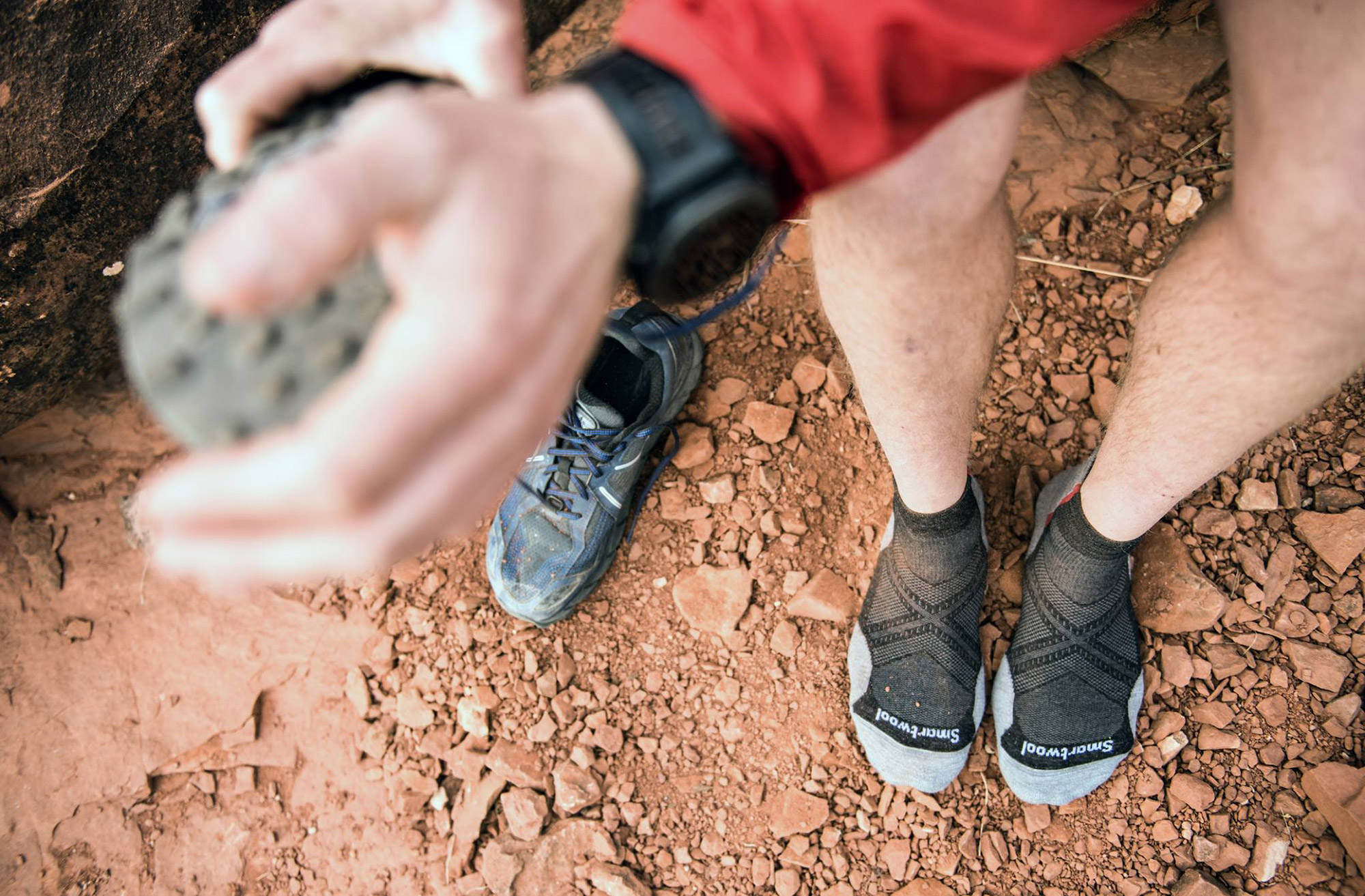Whether you’re hiking, skiing, running, or biking, your feet take a beating. Just as important as your other footwear, a good pair of socks will make the difference between comfortable, dry, happy feet, and sweaty, blistered messes. These days, socks are specialized and tailored to exactly what you want to do, so there’s no reason to be uncomfortable in your boots again—if you know what to look for.
Unfortunately, there is no “super sock” and personal preference is a big factor when selecting this kind of undergarment. You’ll want to try a variety to see what works best, and perhaps you’ll land a lucky pair in the process, just make sure to wash them occasionally.

Cuff Height
Cuff height, which refers to where the cuff ends on the wearer’s foot or leg, often falls under four categories: no-show, ankle or quarter/half crew, crew, and knee socks. You’ll want to pick a sock that is the same length or a little higher than the profile of the footwear you will be wearing. The higher the cuff height, the greater the protection from blisters and abrasions from things like brambles, bike chains, or kicking your ankles when hiking.
Material
The material or fabric your sock is made from will have a huge impact on comfort, breathability, and moisture management—feet are sweaty, after all!
Wool is great for moisture, odor, and temperature management. Specifically, merino is one of the most popular choices for high-output activities, like hiking or running, with the expectation that your feet will be sweating a lot or exposed to puddles and rainy conditions. Merino is a finer wool fiber, making for a soft, non-itchy feel. It’s lightweight, resists odor, and won’t retain moisture. Read: less time for blister-causing friction to occur, cold feet due to soggy socks, or heavy feet from unexpected puddle jumping.
Cotton is inexpensive and lightweight. It’s a natural, plant-based fiber and is best suited for casual wear and low-output activities as it’s very likely to retain moisture.
Bamboo is another natural and plant-based fiber, safe for vegan lifestyles, yet is more appropriate for high-output activities. The fiber has a hollow structure, which allows for moisture absorption and is far more likely to keep your feet dry and odor-free than cotton.
Blends imply that there are at least two different types of fibers that make up the sock, often to increase durability or wicking properties without adding weight. Many multi-sport socks blend merino and synthetic to increase comfort and moisture management without sacrificing durability.
Synthetic socks are made of acrylic, nylon, elastane, polyester, etc. These man-made materials are lightweight and fast drying like merino wool and bamboo, but will often come in at a much lower price, and don’t insulate quite as well when wet.

Cushioning/Weight
The amount of cushioning your sock has can really affect how your shoe fits, and can make a world of difference over the course of a day’s wear. The benefits of cushioning are that it absorbs impact that your footwear doesn’t. Some socks will have padding in certain places—like the toe and heel—specifically for this reason. Padding is not only placed underfoot either; many hiking socks will have cushioning all around the cuff and ski socks will commonly have padding on the shins.
Cushioning can come into play in other areas as well. If you have a little extra room in your shoe, the extra material can improve the fit. In the colder months and during low-output activities, a heavier-weight sock will provide extra insulation. Just be aware that the amount of cushioning will directly correlate with the warmth of your sock—a lot of cushion means a lot of warmth, which may or may not be the best thing, depending on the time of year.
Liner Socks
Liner socks are ultra-thin, typically synthetic socks that are sometimes worn between the skin and the actual sock. For most hikers, they aren’t necessary, but for some, they can prevent blisters and allow moisture to pass more easily from the skin to the outer sock.
Seams
Seams aren’t necessarily a bad thing, but many socks will boast of having a “seamless design.” The benefit of this is that there is less material and makes for a smoother fit inside your boot or shoe. If you are prone to hot spots or blisters, finding a seamless sock might help with curbing that problem.

Which Socks Should I Get?
Road running or walking: Look for a low cuff height (no-show to ¼ crew), which will cut down on the weight of the socks. A synthetic blend or merino/synthetic blend will wick during high-aerobic activities and stay comfortable and soft. A light or ultra-lightweight sock will limit weight and help keep your feet cool, without affecting the fit of low-profile running sneakers.
Trail running: A ¼ height or crew sock will provide better protection from low-lying brush and any small aggregates you may kick up while a merino or merino/synthetic blend will better manage moisture from sweat and puddles. Pick a lightweight sock with padding in the heel and toe. Trails are a little more rugged and you’ll want something to absorb the impact from running over roots and rocks.
Hiking: Find a sock that is at least as high as your boot. Something slightly higher will offer more protection from sticks or thorns scratching your leg if your pant hem rises up. Merino will keep any foot odors in check, and it will also work with varying foot temperatures from alpine starts to mid-day trail blazes. Light to heavy cushion will work for most people. Opt for heavy weight in the winter months, or if you have a lot of trail to cover ahead of you with a heavy pack in tow. Fit your boots to the weight of the sock you plan to wear regularly.
Ski: Ski boots are tall so opt for a sock that is slightly higher—typically knee-high. Merino will manage moisture but a merino/synthetic blend may feature increased durability and stretch. Ski boots traditionally fit tight, and you do not want to bunch extra material in the toe box, so a lightweight sock is typical. Look for socks that offer cushioning in the front of the shin, as this will offer more comfort when leaning forward into a stiff boot.
Cycling: While cycling shoes have a very low-profile design, the extra cuff height of a ¼ of full crew sock will protect your ankles from greasy chains and accidentally kicking your ankles into the pedals. Look for comfort and breathability from an ultralight merino or merino/synthetic blend.

Glenn Swanson
Glenn got her literary debut writing weekly Taco Tuesday invitations to her pals while at UMaine. After a brief stint in writing memes for circulation among the office crowd, she decided to pursue the wilder frontier of outdoor blogs. She’s committed to the having the most fun on the mountain and sharing that stoke with others, including, but not limited to, summit high-fives.
Related Posts
May 8, 2024
Why More and More Brands Are Using Wool As Jacket Insulation
Why wool's star is rising as an…
May 3, 2024
Book Review: A Light Through the Cracks by Beth Rodden
A new memoir from a pioneering woman…




